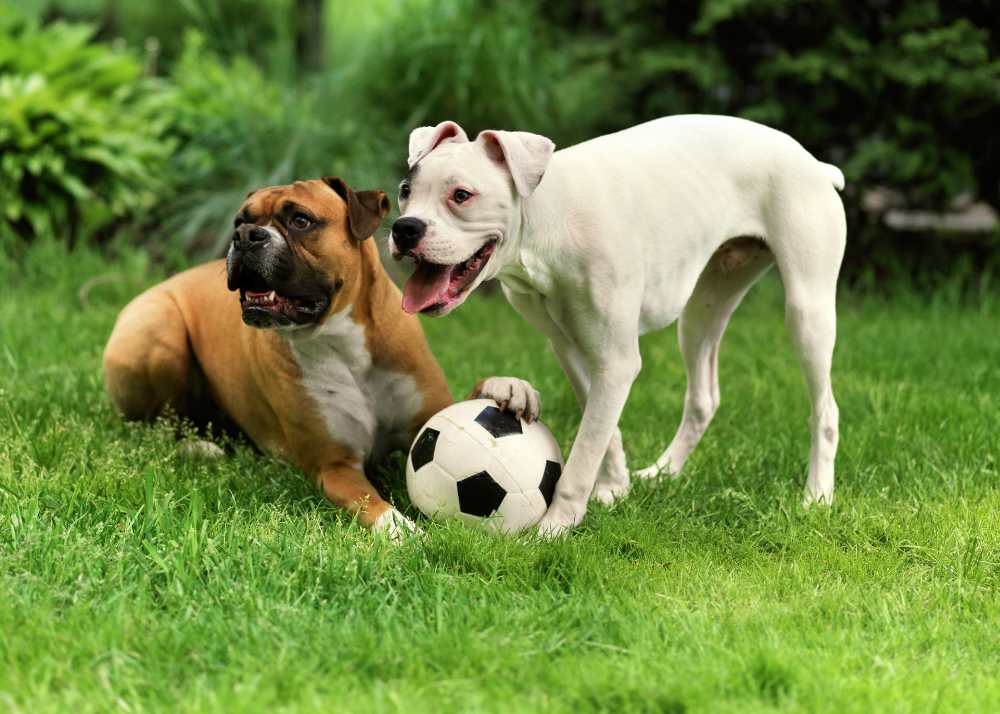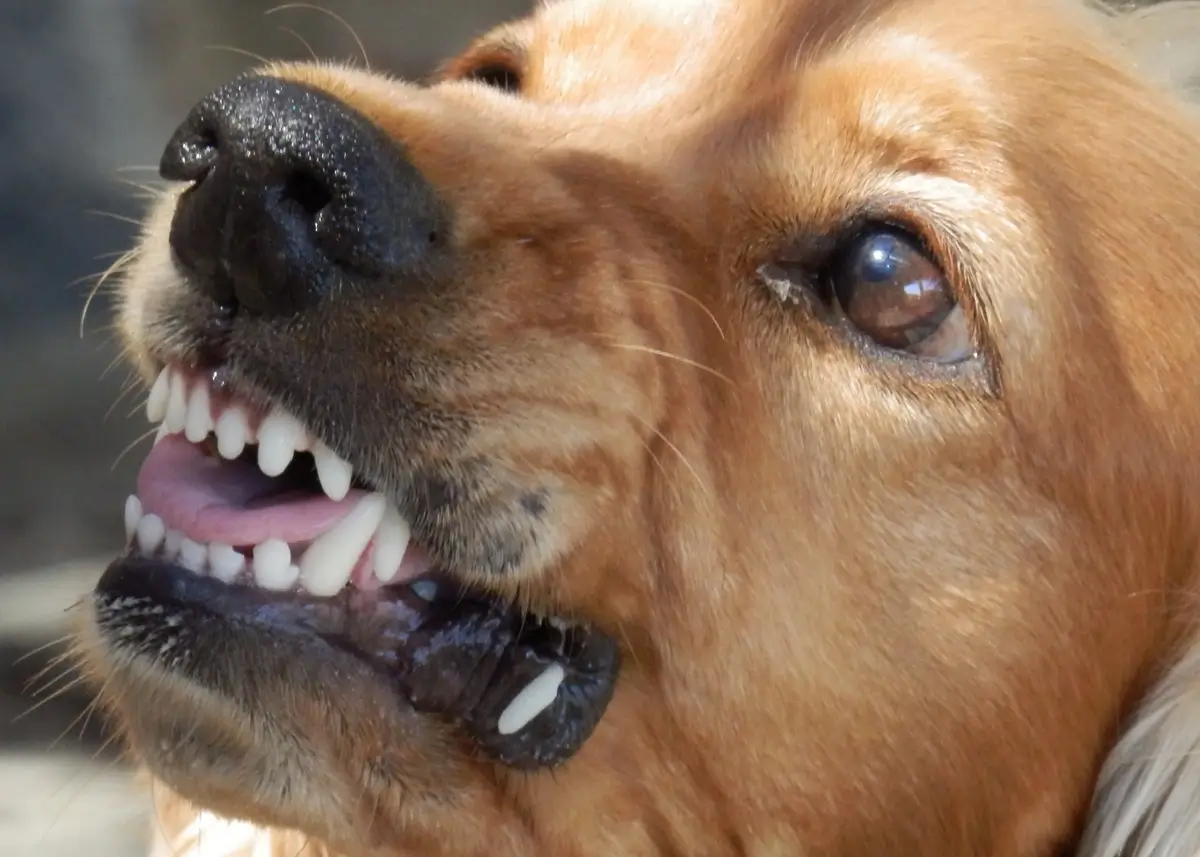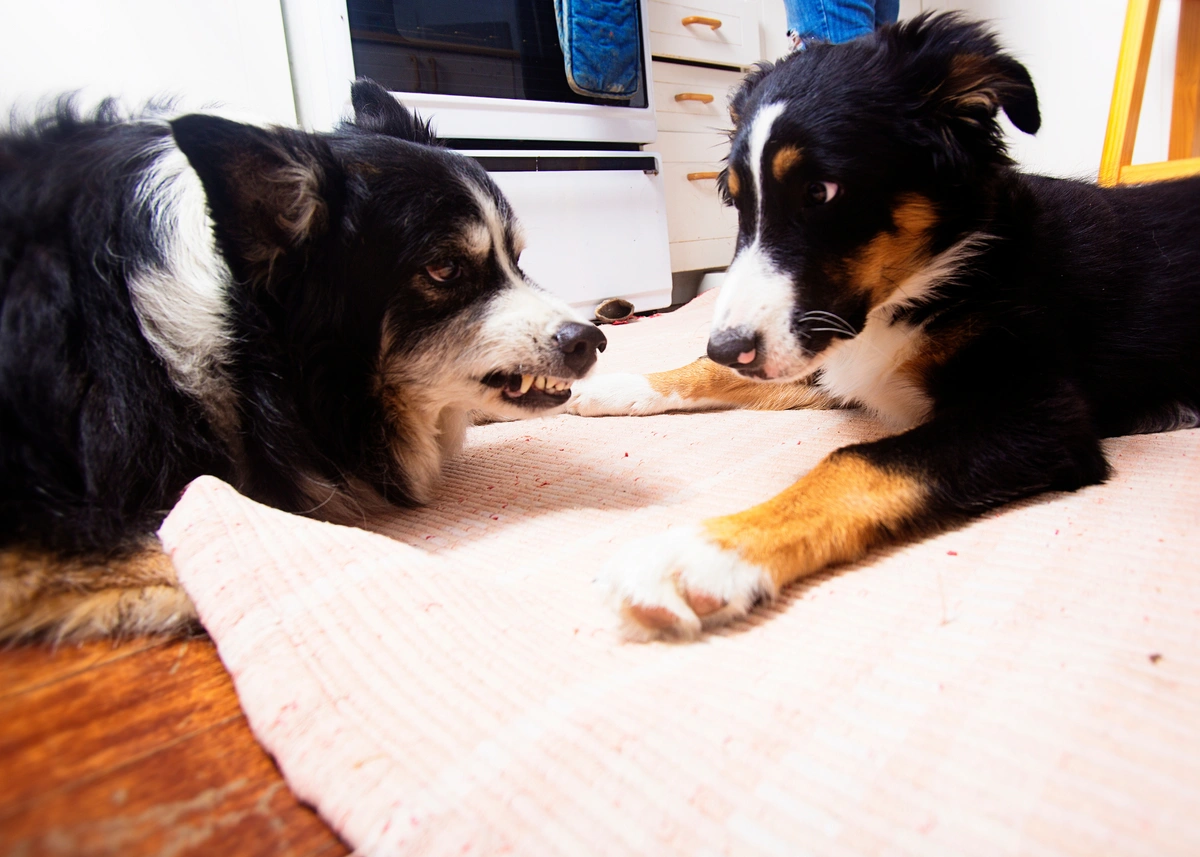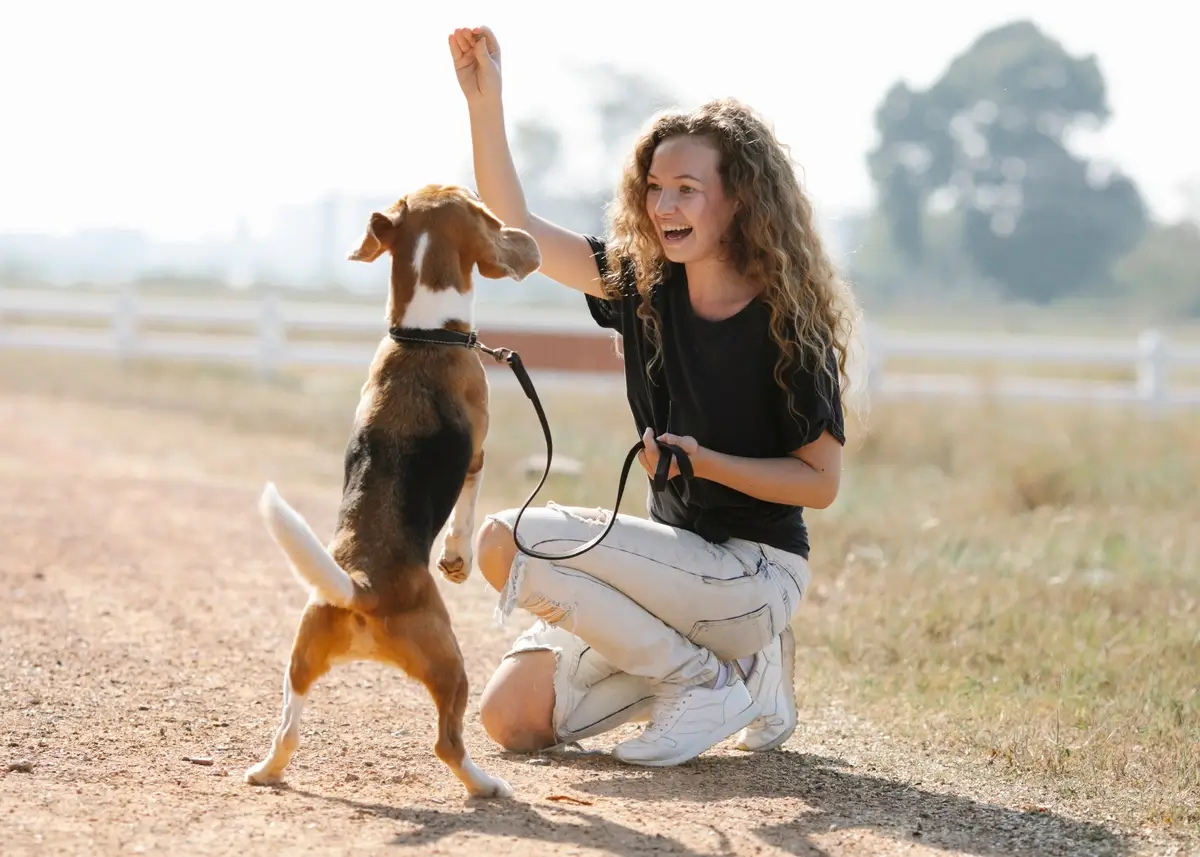Your dog has climbed up onto the couch once again to settle into his favorite spot in the sun. He loves to nap up here and will let you snuggle with him.
However, as you sit down and reach for him, you notice his body go stiff. He lets out a low growl and lifts the side of his lip to show you his teeth.
“What has gotten into Fido?” you wonder. You’re baffled as to what caused this sign of aggression. You need to know what to do about it because you know your behavior and training choices will either help this situation – or make it worse.
What your dog is exhibiting is called resource guarding, also called possessive aggression or food aggression.
We all love it when our pets show a sense of loyalty. We may think it’s cute (well, sometimes) when our dogs alert us to and defend us from swirling leaves on a windy day. But we don’t want our puppies to begin developing aggressive behavior when we come near their favorite spot while watching the world go by out the window.
Let’s examine what is resource guarding in dogs, signs your puppy is resource guarding, and what to do about it in regards to prevention and training.
What Is Resource Guarding in Dogs?
Resource aggression in dogs is when a dog asserts itself over food, toys, places, beds, treats, bones, or other prized possessions – even a beloved person.
Signs of Resource Guarding
While we all wish our dogs could talk to us, unfortunately, your puppy cannot merely say, “Stay back! Don’t touch this!” Instead, they will use body language and sounds to convey their stance on the matter.
Understanding your puppy’s body language goes a long way in interpreting the situation when you start to notice a change in your puppy’s behavior. Familiarize yourself with these signs of resource guarding:
- Snapping
- Lip licking
- Snapping
- Going rigid
- Low growling
- Show of teeth
- Showing the whites of their eyes
- Appearing hyper-aware of surroundings
- Staring or fixated on an object or person
- Ears pointed back and flattened against their heads
What are the Causes of Resource Guarding and Possessive Aggression in Dogs?
Figuring out the root cause of possessive aggression in dogs can help us know how to approach the behavior to correct it right away. Here are some reasons dogs may show resource-guarding behaviors.
Natural behavior
Wolf ancestors and dogs living in the wild before domestication had to search for food and at times could experience slim pickings for dinner. The drive to protect a prized kill from other threats is a natural genetic response to such a scarce resource. It was their way to survive before dogs became reliant on humans for their food. Whether it’s food aggression, taking away a favorite toy, bone, or treat, or even sitting next to them, this scarcity of resources mentality is most likely responsible for the underlying root cause of resource guarding.
Anxiety and stress can lead to fear
A dog becomes anxious and stressed when they are afraid, which causes a behavior change. Anxiety, stress, and fear in puppies can be triggered by a variety of factors.
Introducing a new dog to existing pets can cause friction between the already-established pet that now has to share resources with this new ball of fur.
Children in the home can be a huge reason for resource guarding in your puppy. Both your puppy and your children need to be supervised at all times when around each other because things can happen in an instant. Toddlers through school-age children need to be taught and trained from Day One how to interact with a dog properly. Uncoordinated children who don’t understand personal space may lunge at the dog, causing them to become startled and give a warning growl and bared teeth. Your dog might not be able to tell the difference between its toys and the baby’s toys.
Doggy daycares and dog parks are also an opportunity for dogs to exhibit resource guarding. If you bring a special toy, dogs may fight to defend their access to it. For this reason, many places ask owners not to bring personal toys.
Poor human behavior
We want to do what’s right for our puppies, but sometimes our well-meaning intentions can make a situation worse. Puppy owners who take toys and food away mid-enjoyment send signals to their puppy that when they approach, something negative is going to happen. Your puppy is warning you not to come near them and snatch their favorite toy or food away.
Meanwhile, you were thinking all along that it was the right thing to take it away mid-growl or frozen stance. Even when it is accidental behavior, we need to learn from our mistakes and be willing to shift to a new strategy when one is not working.
Tips For Preventing and Correcting Resource Guarding
When your puppy begins to give signs of resource guarding, you absolutely have to nip this in the bud before they nip you, your child, or worse. You can be proactive and reactive if they’ve already exhibited this behavior. Otherwise, the best way to prevent the issue in the first place is to start training your puppy right away.
What you may not notice is a step-by-step guide. Rather than give explicit instructions, we encourage you to consult with a professional such as your vet or a local dog trainer to discuss the best options that would work for your puppy since every puppy’s personality and situation are different. We’ll offer general advice our staff has found to be helpful when preventing and correcting resource guarding in our dogs. Find out lots of methods before you try one, or employ a professional dog trainer.
Get reflective
The first step in beginning your resource guarding training journey is to examine your behaviors and intentions. Ask yourself, “Is there an actual scarcity in my home my dog is trying to hold onto and protect?” Your puppy is still learning which toys belong to whom when there are young children also in the house sharing the same play space. If you have children, are you truly supervising them around your puppy? You cannot allow them to antagonize the dog when the child thinks they are just playing and turn a blind eye to all of it. Is there another dog in the house? Not enough toys at doggy daycare and the dog park? Being reflective will help you point out flaws in your method before you deal with your dog’s issues.
Consult a professional dog behavioralist and trainer
You may know right away you want to involve a professional dog behavioralist and trainer, or you may want to try your hand at a few of these methods first before consulting with one. We recommend calling a professional if the situation has escalated, especially if your dog has already snapped, or if you want to start right away. It’s your call, literally.
All hands on deck
Everyone in your household will need to be on board with the chosen training method. Without an agreement, different members can handle it their way, sending mixed signals and causing confusion in your puppy. All your hard work will be compromised unless everyone is on board with the plan.
Teach helpful training commands
Teach your dog basic training commands consistently. If your dog is misbehaving, you’ll have the ability to tell your dog what you want them to do rather than what not to do. Some helpful commands include “Drop it,” “Leave it,” and “Give.”
Use positive reinforcement
You’ll need to make listening to you and following commands the most exciting part of your puppy’s day. Praise them lavishly and abundantly when they perform a desired behavior. Use a happy tone of voice so there is no mistaking when you are pleased with their actions!
You’ll get quick results when you select a high-value, tasty treat your puppy loves. Food motivation can go a long way, especially when training stubborn puppies.
Leave your dog alone
Instead of trying to take away the item causing problems, leave your dog be. Allow your puppy to enjoy the food, treat, or toy without being disturbed until you can successfully avoid resource guarding after training.
Using a dog crate will also help associate the crate as a safe, pleasant space while keeping your puppy separated to enjoy the item in peace.
Socialize your dog
Your puppy learns appropriate behaviors when playing with other dogs like bite inhibition and sharing. The more opportunities your dog has to interact with dogs, the more your puppy will learn appropriate canine behavior from its doggy peers. Likewise, exposing your puppy to several instances of unfamiliar places, noises, and other environmental factors will reduce the anxiety your puppy experiences if they don’t have this exposure.
Be consistent
Breaking your dog from bad habits won’t happen overnight, so you have to be patient. You have to ensure the safety of your household and guests to address this behavior, but these things take time and consistency. While you may get frustrated, never show your exasperation to your puppy or take it out on them.
What Not To Do When Managing Resource Guarding
While there is a wealth of information on there about what to do, here are some tips for what not to do when addressing resource guarding in your dog.
- Punish your puppy: We know it may seem absurd to even have to say this, but never hit or strike your puppy for any reason, including popping them on the nose. Don’t use shock collars, either.
- Yell and scream at your puppy: When you raise your voice, you are causing your puppy to fear you rather than respect you. It will backfire! You’ll be breaking the bond with your puppy you worked so hard to establish.
- Hands off: Don’t stick your hands in the bowl or on the object or try to take away the item. This further solidifies resource guarding, not what you thought of them learning to tolerate your hand nearby.
- Clear the area: If you can, pick up items or take them away before the incident occurs. You are not harming your dog by removing its favorite toy for a while.
- Ignore warning signs: It does no good to live in denial or think your dog snarling is a cute behavior, especially if you have a little dog. It’s not cute at all! This behavior can only get worse, and the consequences can be dire if they attack someone.
- Ignore establishment wishes: If a place of business or dog park asks that you leave special toys at home or refrain from bringing treats like bones or chews, then you need to respect their request. They have rules for a reason.
Train Pawrade Puppies For Sale
If you’re eager to begin your journey of life with a new furry friend, it may be an arduous process searching for “puppies for sale near me.” How do you know where to turn to during your search?
Pawrade connects pawesome people like you with happy puppies from hand-selected breeders. Our breeder partners must pass a rigorous screening and place the well-being of their puppies above all else.
A member of our Puppy Concierge team can walk you through each step of our seamless process. You’ll never have to worry about being scammed thanks to a secure transaction management system, PetPay, used for all correspondence and transactions. Each puppy comes with a comprehensive health guarantee that protects both you as the buyer, our breeder partner, and most importantly, your puppy.
From tiny Chihuahua puppies to huge Great Dane puppies, Check out our puppies for sale for a furbaby to train up to be a good boy or girl!





